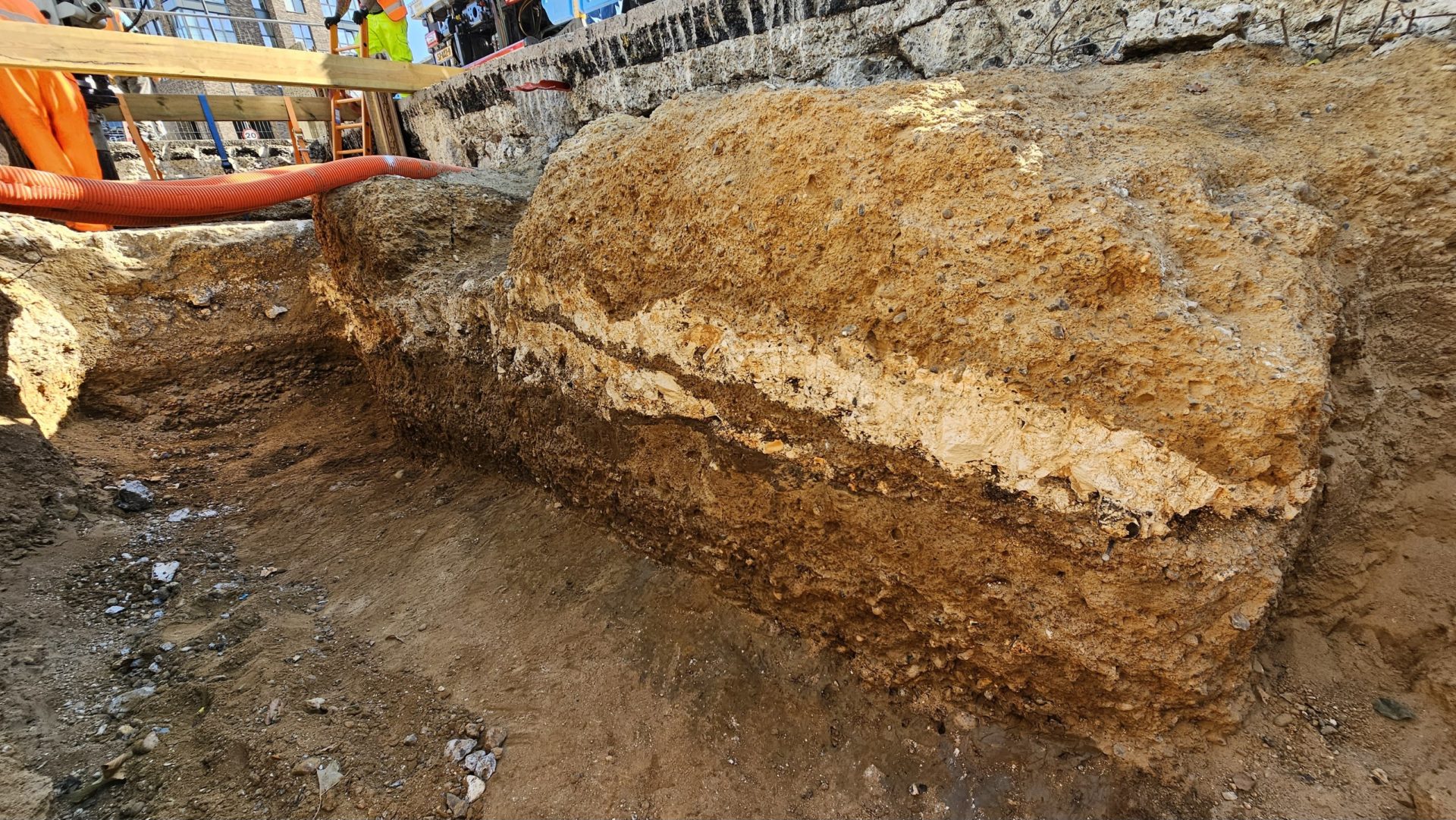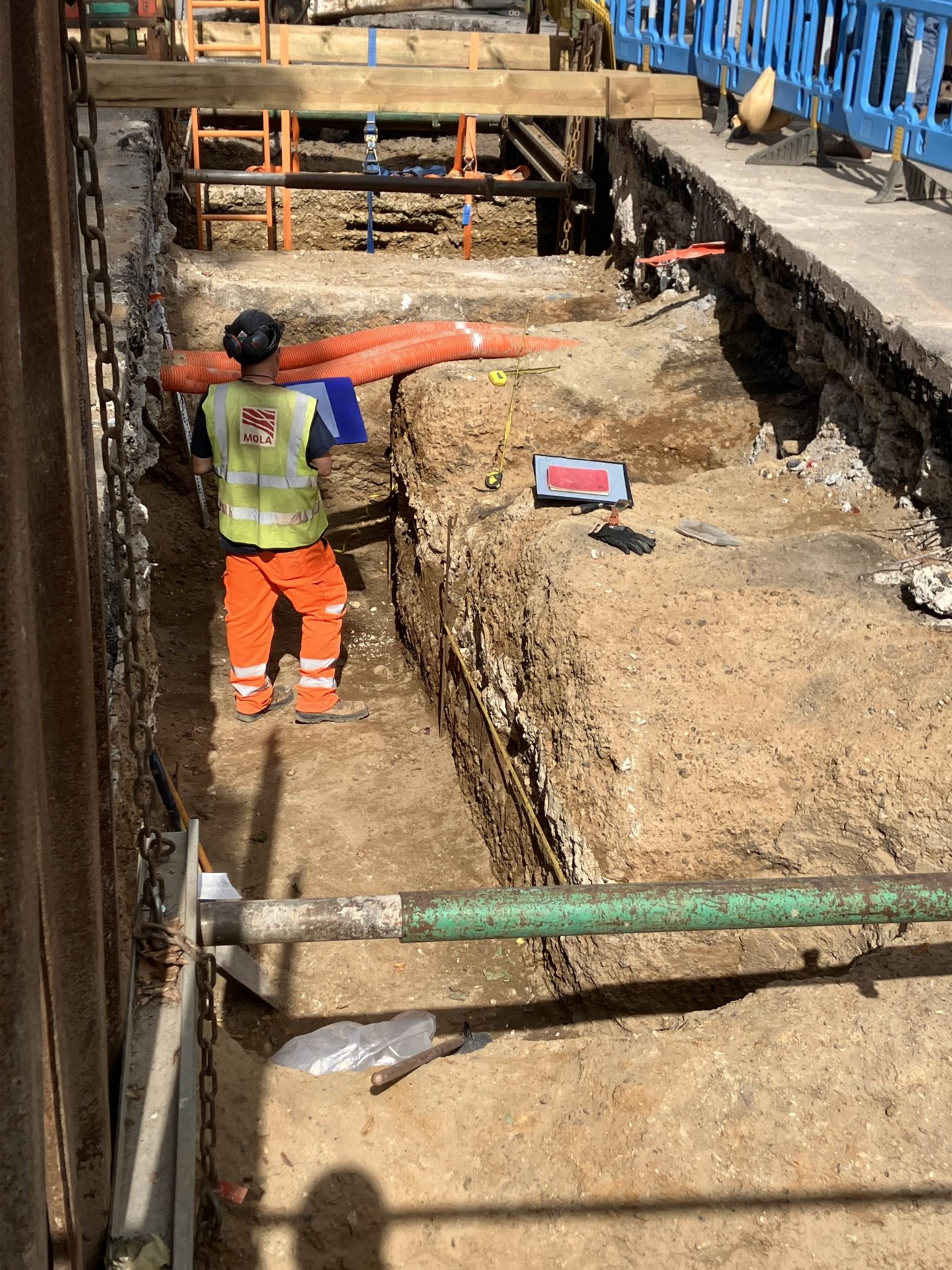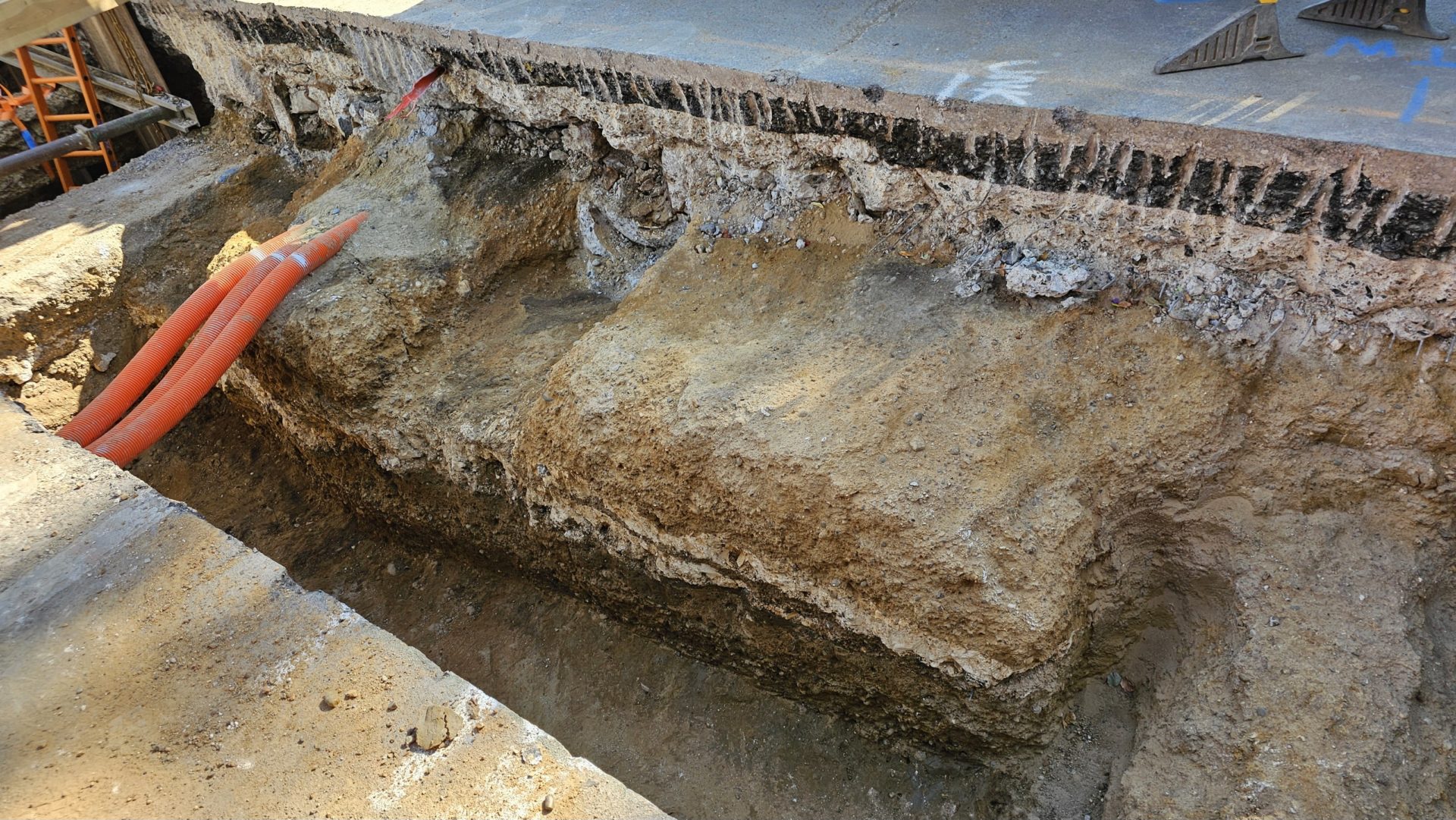
A section of one of Britain’s most important Roman roads has been unearthed under the Old Kent Road in south-east London during heating network extension works.
The section is well preserved and measures 5.8m wide by 1.4m high. It shows distinct layers which tell the story of the road’s construction. It includes a solid foundation of compacted gravel sealed by two layers of chalk, which was then topped with another layer of compacted sand and gravel.
The original road surface would likely have been made from the same material and sat at a similar level to the modern road. However, this has been lost. The base of the modern road rests directly on the Roman fabric.

Remains of an ancient route
The discovery was made during the expansion of Southwark’s low-carbon heat network by Southwark Council and Veolia.
The remains were identified by a team of archaeologists from the Museum of London Archaeology (MOLA), archaeological consultant RPS and the council’s in-house archaeology officer, Dr Chris Constable.
It is the first physical proof that sections of the 2,000-year-old route survive directly beneath its modern counterpart, the Old Kent Road.
Known as Watling Street, the road ran from the Roman port at Dover (Dubris) through London (Londinium) to the West Midlands, connecting Britain to the wider Roman world.

It was built shortly after the Roman invasion of Britain in AD 43.
Dave Taylor, MOLA’s project manager said: “It’s amazing this section of road has survived for almost 2,000 years. There has been so much activity here over the past few hundred years, from sewers to power cables, tramlines and, of course, the building of the modern road, so we’re really excited to find such a substantial chunk of Roman material remaining.”
Gillian King, director of archaeology at RPS Consulting, said: “The discovery of an intact section of Roman Watling Street directly under the current Old Kent Road has redrawn the Roman road map for Southwark and informs on Roman construction techniques generally. It is a key finding for archaeological research for London.”











